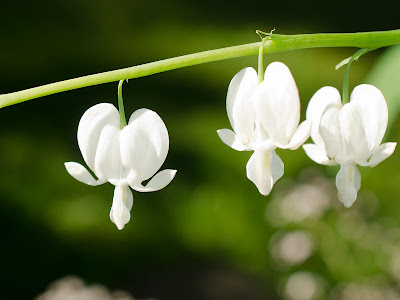 |
| A bright accent in the shade. |
Dutchman's breeches is native to this area, although it is more common on the East coast. It is a Dicentra, closely related to our bleeding hearts and the tiny corydalis I sometimes find among weeds at the edge of the bush. Bleeding hearts also grow in my garden, but the breeches are a much larger plant (ours, from a nursery, are about 2 feet tall), and blooms throughout the summer, while the bleeding heart goes to seed early.
 |
| Corydalis, Beach Grove |
It likes a good, rich, moist soil, and shady woodlands. Ours grow happily under pine and maple trees.
The plant can propagate itself by sending out new roots, but also sets seed in long seed pods, much prized by ants.
Dutchman's breeches is one of many plants whose seeds are spread by ants, a process called myrmecochory. The seeds have a fleshy organ called an elaiosome that attracts ants. The ants take the seeds to their nest, where they eat the elaiosomes, and put the seeds in their nest debris, where they are protected until they germinate. They also get the added bonus of growing in a medium made richer by the ant nest debris. From Wikipedia.

I just love Dutchman's breeches, but I didn't know how they were dispersed. Thanks for sharing.
ReplyDeleteGreat post- I've learned a lot today. Thanks
ReplyDelete